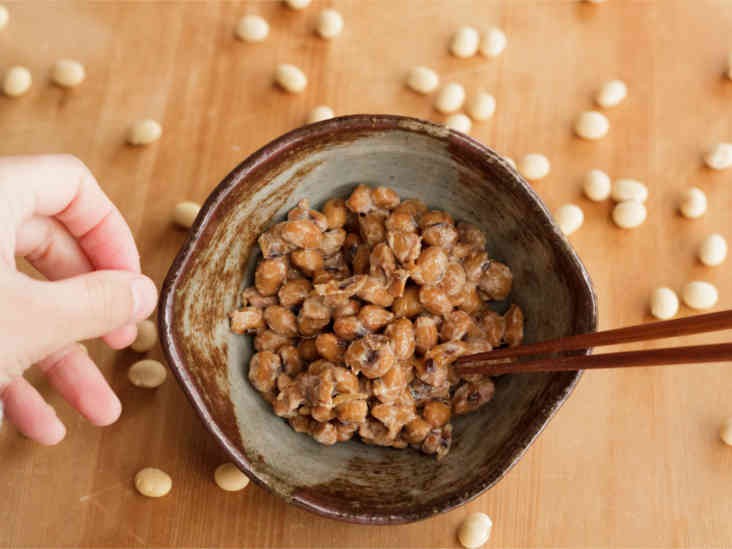Natto

Natto is a traditional Japanese cuisine produced from fermented whole soybeans with Bacillus subtilis var. It is frequently served for breakfast, usually with rice. It is typically served with karashi mustard, soy or tare sauce, and Japanese bunching onion. Natto is especially popular in Japan's eastern areas, notably Kant, Tohoku, and Hokkaido. Natto is typically considered an acquired taste due to its pungent odor, flavor, and sticky, slimy texture.
Natto is one of the greatest sources of vitamin K2 since it contains the most vitamin K2. One tablespoon of Natto provides 150 micrograms of vitamin K2, which is roughly twice the recommended daily allowance. It is derived from fermented soybean, which develops a sticky web-like structure. It is a foul-smelling meal that is commonly offered at Japanese breakfast. This traditional Japanese dish has three different kinds of vitamin K2. It is also high in antioxidants and protein.
Natto is lower in antinutrients and higher in probiotics than non-fermented soybeans. This helps your body absorb nutrients more quickly and reduces unpleasant stomach symptoms. Natto is high in calcium and vitamin K2, both of which help to build stronger, healthier bones. Natto is high in fiber, probiotics, vitamin K2, and the enzyme nattokinase. This combination may help lower cholesterol and blood pressure, lowering the risk of heart disease.











